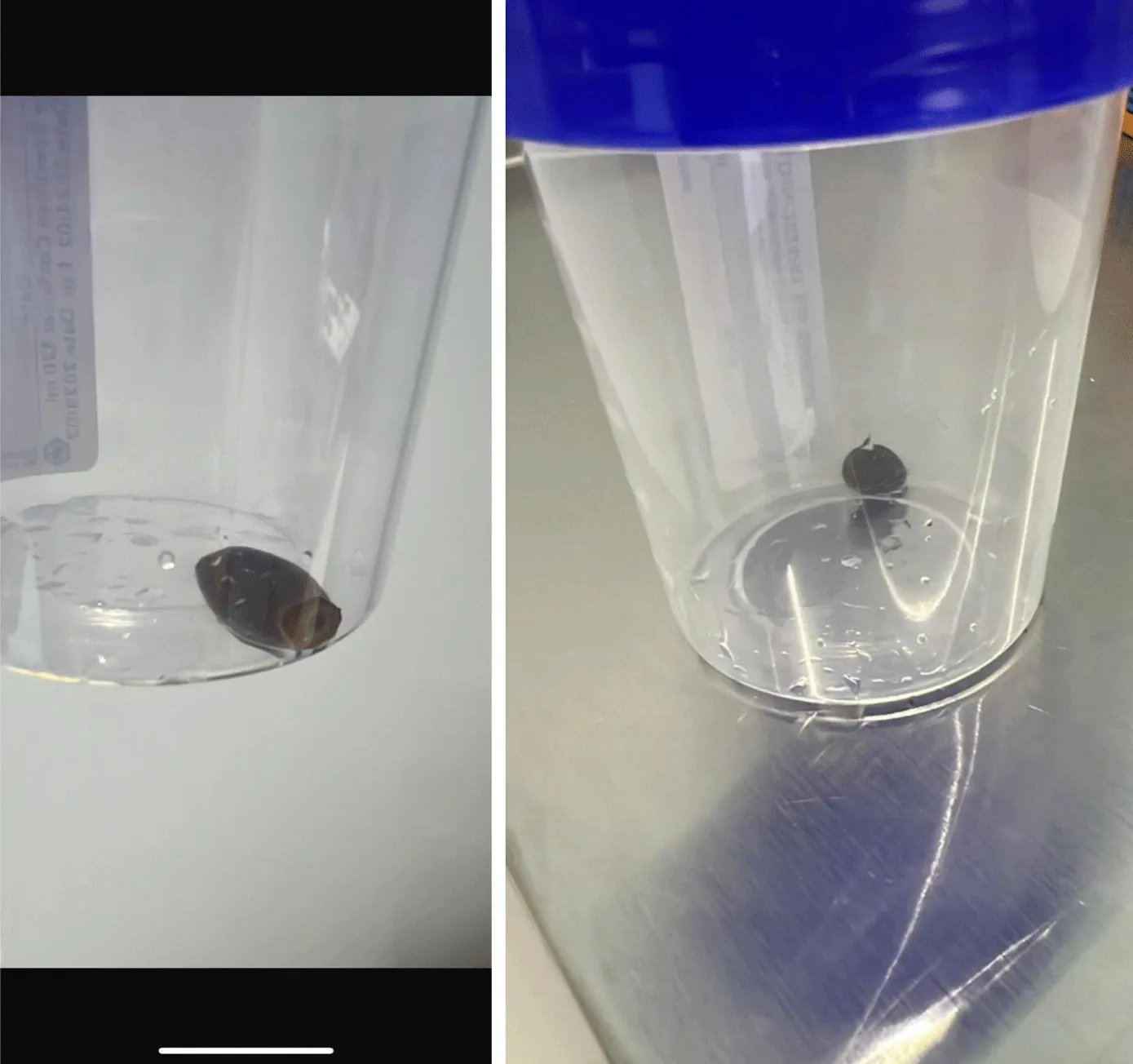Archives of Nursing Practice and Care
An Innovative Office-Based Technique for Urethral and Bladder Stones: A Case Report
Amr Elmekresh*, Ozair Al Ziyada, Tariq Abdul Hamid, Fadhel Yusuf, Ayman AlYammahi, Elena Surovtseva, Elham Mahjoor Azad, Abdulmunem Alsadi, Mohamed Kaya, Yaser Saeedi and Fariborz Bagheri
Dubai Hospital Urology Department, Mohamed Bin Rashid University, Dubai Health, United Arab Emirates
Cite this as
Elmekresh A, Ziyada OA, Hamid TA, Yusuf F, AlYammahi A, Surovtseva E, et al. An Innovative Office-Based Technique for Urethral and Bladder Stones: A Case Report. Arch Nurs Pract Care. 2024;10(1):001-002. Available from: 10.17352/2581-4265.000066Copyright License
©2024 Elmekresh A, et al. This is an open-access article distributed under the terms of the Creative Commons Attribution License, which permits unrestricted use, distribution, and reproduction in any medium, provided the original author and source are credited.This case report presents a novel, cost-effective, and minimally invasive office-based approach for managing urethral and bladder stones in an emergency setting. The method involves initial stone manipulation into the bladder, followed by Foley catheter placement and a regimen of tamsulosin to enhance urethral dilation and urine flow. Instillagel is subsequently applied after catheter removal to aid stone expulsion. This technique avoids surgery, demonstrating efficacy in a patient with a 6 mm urethral stone, providing a patient-friendly and resource-conscious alternative to traditional management.
Introduction
Urolithiasis is a significant health burden worldwide, often requiring costly and invasive surgical procedures such as ureteroscopy or cystolithotripsy [1]. Innovative, non-invasive approaches can offer solutions to reduce patient discomfort, lower healthcare costs, and improve outcomes [2]. The presented method involves initial stone manipulation into the bladder, followed by Foley catheter placement and a regimen of tamsulosin to enhance urethral dilation and urine flow [3]. Instillagel is subsequently applied to aid stone expulsion [4]. This technique avoids surgery, demonstrating efficacy in a patient with a 6 mm urethral stone, providing a patient-friendly and resource-conscious alternative to traditional management [5]. The presented case highlights the significance of an office-based technique for emergency management of urethral stones, providing a novel alternative in specific clinical scenarios.
Case presentation
The patient was a 52-year-old male with no prior urolithiasis history but reported severe dysuria, hematuria, and urinary retention. Imaging with a non-contrast CT scan confirmed the presence of a 6 mm obstructive urethral stone in the distal urethra (Figure 1).
Procedure steps
- Stone manipulation: The stone was manually pushed into the bladder using a lubricated clamp under local anesthesia (2% lidocaine gel applied intraluminally). The procedure was done with careful guidance and without causing urethral trauma.
- Catheterization and medical therapy: A 14-Fr Foley catheter was placed for bladder drainage, and tamsulosin 0.4 mg once daily was prescribed for 7 days to promote urethral relaxation and facilitate stone passage.
- Instillagel application: After catheter removal, 10 mL of Instillagel (2% lidocaine with chlorhexidine) was administered directly into the urethra. The gel provided lubrication and further facilitated the smooth expulsion of the stone.
- Stone expulsion and observation: The stone was expelled within 3 days, accompanied by a significant improvement in the urinary stream. The patient reported mild pain (managed with oral NSAIDs), which resolved spontaneously.
Discussion
The described approach achieved successful stone expulsion with minimal discomfort. The patient reported mild dysuria during follow-up, which resolved spontaneously [1]. The total cost was significantly lower than surgical management, and the recovery was prompt without hospital admission [5].
The described office-based technique integrates manual stone manipulation, pharmacotherapy (tamsulosin), and topical lubrication (Instillagel) to achieve successful stone expulsion. Compared to ureteroscopy or cystolithotripsy, this approach avoids general anesthesia, reduces healthcare costs, and minimizes patient discomfort [5]. Tamsulosin, an alpha-blocker, promotes smooth muscle relaxation in the distal urethra, easing stone passage.
This method is particularly effective for urethral stones ≤7 mm [1], as demonstrated in our case. Future studies should explore the efficacy and safety of this approach in a broader patient population.
Conclusion
This innovative, office-based technique for urethral and bladder stone management offers a viable alternative to surgical procedures, particularly for stones ≤7 mm in diameter. The combination of Foley catheterization, medical therapy, and local gel application demonstrates a cost-effective and patient-centric approach.
- Pathan SA, Mitra B, Cameron PA. A Systematic Review and Meta-analysis Comparing the Efficacy of Nonsteroidal Anti-inflammatory Drugs, Opioids, and Paracetamol in the Treatment of Acute Renal Colic. Eur Urol. 2018;73(4):583-595. Available from: https://doi.org/10.1016/j.eururo.2017.11.001
- Türk C, Petřík A, Sarica K, Seitz C, Skolarikos A, Straub M, Knoll T. EAU Guidelines on Interventional Treatment for Urolithiasis. Eur Urol. 2016;69(3):475-82. Available from: https://doi.org/10.1016/j.eururo.2015.07.041
- Wang RC, Smith-Bindman R, Whitaker E, Neilson J, Allen IE, Stoller ML, et al. Effect of Tamsulosin on Stone Passage for Ureteral Stones: A Systematic Review and Meta-analysis. Ann Emerg Med. 2017;69(3):353-361.e3. Available from: https://doi.org/10.1016/j.annemergmed.2016.06.044
- Campschroer T, Zhu X, Vernooij RW, Lock MT. Alpha-blockers as medical expulsive therapy for ureteral stones. Cochrane Database Syst Rev. 2018;4(4):CD008509. Available from: https://doi.org/10.1002/14651858.cd008509.pub3
- Seitz C, Liatsikos E, Porpiglia F, Tiselius HG, Zwergel U. Medical therapy to facilitate the passage of stones: what is the evidence? Eur Urol. 2009;56(3):455-71. Available from: https://doi.org/10.1016/j.eururo.2009.06.012

Article Alerts
Subscribe to our articles alerts and stay tuned.
 This work is licensed under a Creative Commons Attribution 4.0 International License.
This work is licensed under a Creative Commons Attribution 4.0 International License.


 Save to Mendeley
Save to Mendeley
